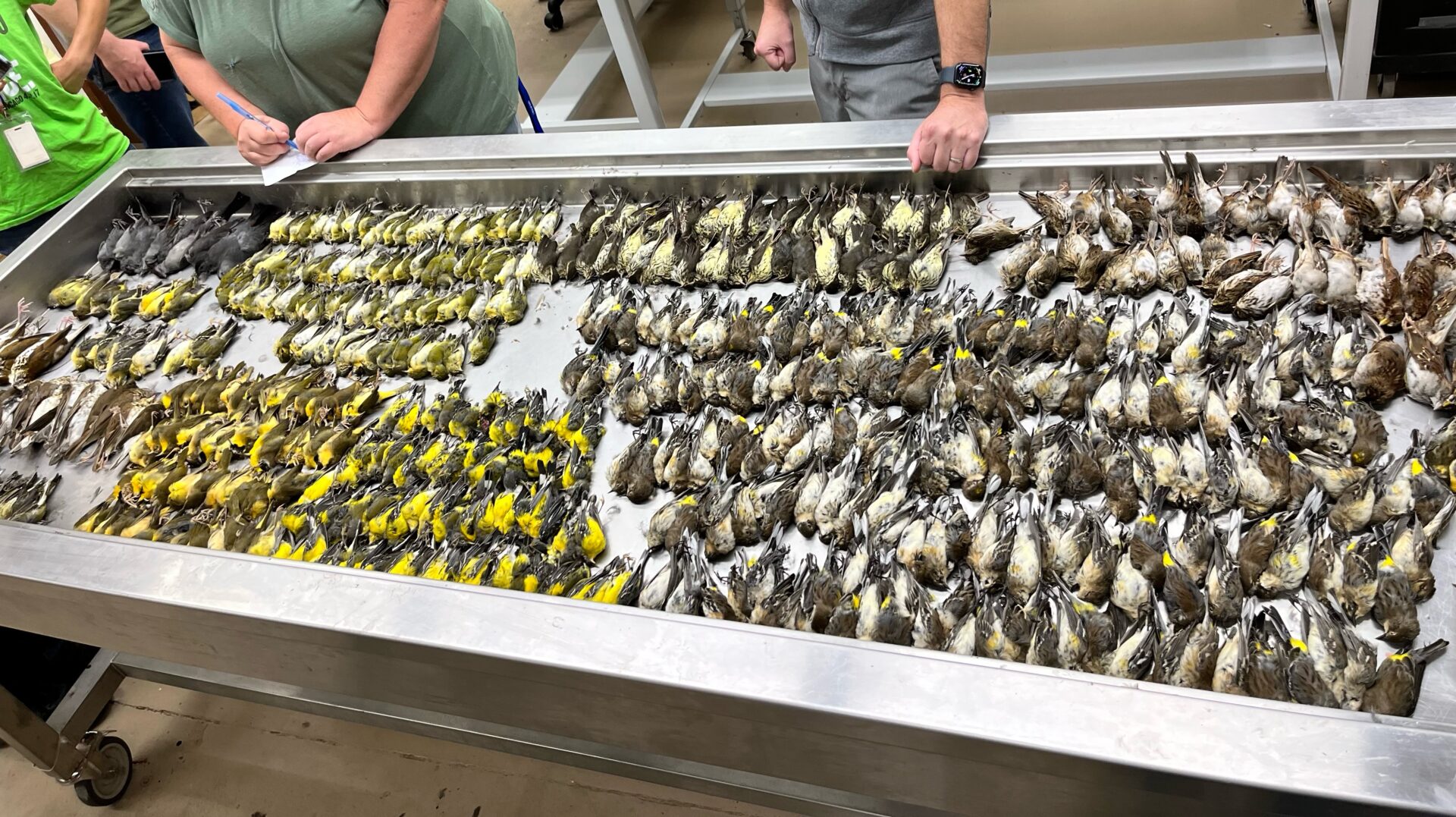A recent mass casualty event which saw at least 1,000 migratory birds die from colliding with a single building in Chicago has turned heads and strengthened calls for action since photos of the tragedy emerged.
On October 5, the carcasses of numerous species, from Tennessee Warblers to American Woodcocks were discovered at the foot of the predominantly glass-covered McCormick Place Lakeside facility – the largest convention centre in North America. Since this discovery, volunteers have continued to collect bird carcasses around the city, birds also likely to have collided with the glass before succumbing to their injuries elsewhere.
Every autumn, approximately five million birds migrate through Chicago on their journey south. This, coupled with the large number of skyscrapers, means that the city is no stranger to bird collision incidents. However, the recent incident set a record for the number of dead birds found on the grounds of any one building in one day in Chicago.
Glass collisions can occur by day or night at both high and low-rise buildings, as well as at other structures such as glass bus shelters, an issue first identified by the Czech Society for Ornithology. Day-time collisions can occur when a bird sees the reflection of the sky or foliage in the glass and flies towards it, unaware that there is a glass barrier between them and their perceived destination. At night, artificial light from buildings can divert nocturnal migrants from their path and draw them into urban centres, where they are at a higher risk of collision.
Since the 1990s, a recognition of this issue has led to the establishment of several relevant initiatives in Chicago and indeed, worldwide. The Lights Out! Chicago programme is aimed at encouraging building owners to turn down their lights during the spring and fall migration seasons. Meanwhile, the Chicago Bird Collision Monitors is a voluntary group whose members conduct early morning surveys to locate and collect bird carcasses around the city. This information helps to determine the most problematic buildings for migratory birds and in turn, can be used to encourage building owners to take steps to mitigate risk.
In response to the October 5 mass casualty, Bird Friendly Chicago, (a coalition of Chicago Ornithological Society, Chicago Audubon Society, Chicago Bird Collision Monitors and the Illinois Ornithological Society) has launched a petition which reiterates their previous urgent calls for the interior lights of McCormick Place to be extinguished or shaded every night during migration periods. These protections have been shown to result in an 80 per cent reduction in bird strikes at this location, they state.
Much of the work on bird collisions with glass is concentrated in North America owing to the existence of major migratory flyways there. As Ireland does not sit on these flyways, it is not believed to be an issue of major conservation concern here, particularly when compared to other major pressures such as habitat loss. However, relevant research in this area would certainly be welcomed and would help us to identify where efforts may need to be focused.
At BirdWatch Ireland, we do receive regular calls from homeowners regarding bird collisions with windows, usually concerning common species. As a homeowner, there are several things that you can do to reduce the chances of such collisions occurring.
If a homeowner identifies a problem area, whether it is a window or a glass door, the next step is doing what they can to make this glass visible to birds. The best way to do this is by placing markers on the exterior surface of the glass, ensuring that the spacing between them is tight enough so that the bird does not think it can fly through the gaps. Research has shown that most birds will not attempt to fly through spaces less than two inches high or four inches wide, though research suggests that reducing this to two by two inches would make it more effective for smaller species. Though sometimes used as an attempted deterrent on windows, a single silhouette sticker of a raptor will not prove effective.
It is possible to introduce measures to reduce bird collisions without changing the aesthetics of your home. Unlike humans, birds can see ultraviolet (UV). With this in mind, you could consider placing UV stickers or markers on the exterior of the glass which will be invisible to our eyes but very clear to birds. Commercial UV stickers are available for this purpose, as are UV marker pens that can be used to write on glass.
Our Czech BirdLife partner The Czech Society for Ornithology (CSO) has included conflicts between birds and humans among its long-term species conservation priorities. Bird-glass collision is one of the conflicts they have long been looking at. You can read more facts about this issue and advice on how to prevent it on the CSO website.
Fatal Light Awareness Program (FLAP) Canada – the world’s first organisation to address the issue of bird collisions with buildings – also has guidelines that can support homeowners and building managers in making any necessary adjustments.
If you find an injured bird, it is important to be aware that BirdWatch Ireland is not a rehabilitation organisation and so, can only offer advice in such circumstances. You will need to contact a licenced wildlife rehabilitator for further assistance. You can find a list of rehabilitators around Ireland on the Irish Wildlife Matters Website.
Photo: Some of the victims of the recent mass casualty in Chicago (Photographer: Taylor Hains)


